Marie Antoinette is a name synonymous with luxury and indifference. It is a name that is known all over the world, in one capacity or another. The young Queen of Versailles, who received her crown only nineteen years old, would become one of the most infamous royals that France would ever know. But who was the woman behind the crown? Was she more than the fickle, vain woman she was painted to be? Her life can be described as a fairy tale that ended in tragedy, a queen who was once loved by her people, succumbed to death by their hands.
The early life of Marie Antoinette
Maria Antonia Josepha Joanna was born in Vienna, Austria, in 1755. She was the fifteenth child of Maria Theresa, the Habsburg Empress, and the Holy Roman Emperor, Francis I. Her childhood was marked by relative happiness and indulgence. Her education was conventional for an aristocratic girl from the 18th century. It concentrated mainly on religion and morality. During this time, European monarchies suffered from instability and potential weakness. Maria Theresa had made it her life's task to link her children to prominent marriages, and saw great potential in Marie Antoinette. With the conclusion of the Seven Years' War in 1763, the alliance between France and Austria was left thin. Therefore, the resealing of this alliance became a priority for the Habsburg Empress.
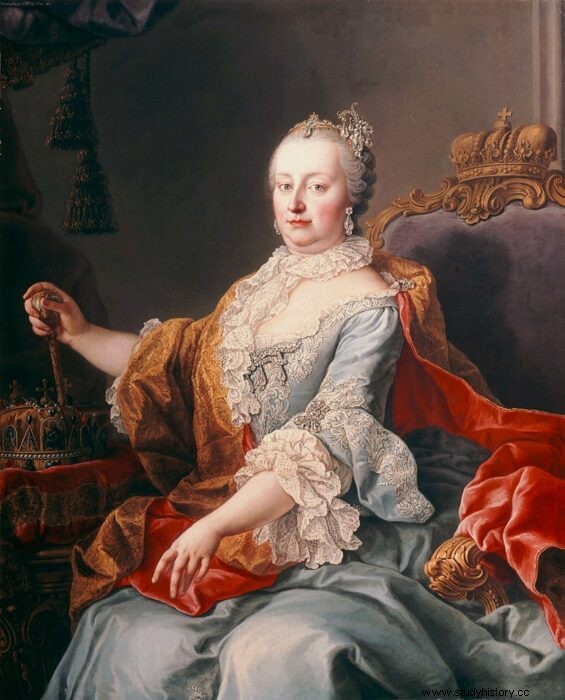
In 1765, the dauphin from France, Louis Ferdinand, son of King Louis XV, died. His death left his eleven-year-old son, the king's grandson, Louis Auguste, the heir to the French throne. Maria Theresa now saw an opportunity to cement the alliance between France and Austria. In 1766 she promised the hand of her young daughters in marriage to the future king Louis XVI of France. Four years later, Marie Antoinette and the new dauphin from France, Louis Auguste, married a clerk in Vienna. They were fifteen and sixteen years old and had never met each other.
Preparing for Marriage
In 1768, the King of France sent a teacher to Austria to educate his grandson's future spouse. The teacher found out that Marie Antoinette was a lazy and empty-headed student. She was more concerned with trivial matters than her studies. He noted that she was more intelligent than originally thought, but that she was still difficult to teach. At this time, Marie Antoinette was fourteen years old. She was described as elegant and pretty, with ash-blond hair and gray-blue eyes. In May 1770, she left Vienna for France, escorted by 57 chariots, 117 infantry and 376 horses. On May 16, a lavish wedding ceremony was held in the Royal Chapel of Versailles. More than 5,000 guests gathered to watch the two teenagers become husband and wife. It marked the beginning of Marie's life in public.

Life in Versailles
Marie Antoinette's life in the public spotlight was not easy. Her marriage to Louis was difficult. She had very few official duties and responsibilities to take care of, so most of her time was spent socializing and satisfying her expensive tastes. Her frequent letters home to her mother acknowledged her severe homesickness. She also raved about the customs she was expected to live by as a lady at the French court. For example, the formality of painting her face in front of dozens of courtiers. " I put on my blush and wash my hands in front of the whole world." (biography.com). In 1744, King Louis XV passed away, and Louis Auguste succeeded him to the French throne as Louis XVI. This meant that Marie Antoinette became queen of France, only nineteen years old.
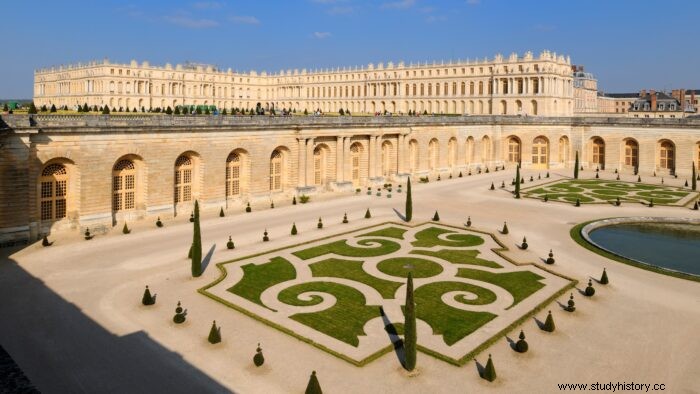
Married life as royalty
As humans, Marie Antoinette and Louis XVI could not have been more different. Louis was an extremely introverted character, shy and hesitant. He preferred solitary pursuits such as metalwork and reading. Marie Antoinette, on the other hand, was outgoing and charismatic; a social butterfly who loved partying, gambling and flamboyant fashion. Where the king preferred to go to bed early, the queen was just starting an evening of partying and entertainment. She often slept for dinner while Louis was up early. He would have been hard in working hours before her. Louis once tried to use his love of crafts to reach out to his wife. He made her a spinning wheel, a nod to her love of fashion. Marie politely thanked him for the gift and then gave it to one of her companions.

The Royal Bedroom
Marie Antoinette and Louis XVI were actually children when they got married. It is therefore not surprising that not much happened in the bedroom between them after the marriage. However, one of the main reasons for royal marriages was to produce heirs, and this quickly created a problem. For the King and Queen of France, their celibacy continued from the wedding night for seven long years. This not only worried members of the royal court, but also became a political responsibility for Louis. Eventually, Marie Antoinette's mother sent her brother Joseph to Versailles to investigate. He referred to the two young royals as' complete mistakes and could not find a good explanation for why no heir had yet been produced, except perhaps for lack of education.

Produces heirs
Joseph continued to talk to the king and queen, which eventually paid off. The couple sent him a letter of gratitude when he returned to Vienna. After this, they produced four heirs in quick succession. In 1778, their first child was born, a daughter, named after her grandmother, Marie Therese. The heir to the French throne succeeded in 1781, a son named Louis Joseph. Marie Antoinette was an avid mother, although she rarely took care of their daily routines, due to strict royal protocol. Their third child, Louis Charles, was born in 1785, while their youngest daughter, Sophie, was born the following year.
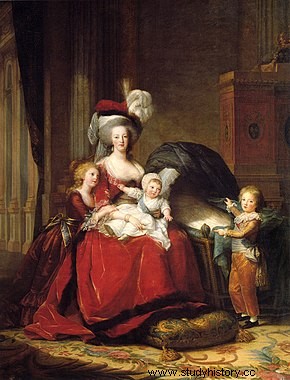
Le Petit Trianon
In 1780, Marie Antoinette began spending more and more time away from the main palace, at the Petit Trianon. This was a mini castle in the palace area that Marie claimed as her own private room. She had artificial rivers, a rotunda and a number of rustic cabins installed in the complex. The decor was extremely sumptuous, with silk hangings, fine porcelain and luxury furniture worth up to two million francs adorning the retreat. Rumors began to spread among the French as to why the queen chose to spend her time there, away from the king. She was accused of arranging obscene parties and entertaining other men. A rumor continued around a Swedish diplomat, Axel von Fersen. He was believed to be the queen's wife, and the only man she ever loved.

Marie Antoinette and the people of France
When she first came to Versailles, Marie Antoinette was loved by the people of France. But that quickly began to change as the nation went into debt and rumors of the young queen's extravagant tastes continued to spread. Colonial wars at that time, especially the American Revolution in which the French had taken part, had left the state in enormous financial debt. During the 1780s, brochures and newspapers began to accuse the Queen of ignorance, exaggeration and infidelity. The publications included obscene comics and gave Marie Antoinette several nicknames, such as Madame Deficit or Madame Veto. The queen refused to let public criticism change her behavior and continued with her lavish lifestyle in the comfort of Versailles.

'Let them eat cake'
Marie Antoinette is probably best known for uttering the phrase "Let them eat cake", in response to the news that the French could not afford to eat bread. The price of grain had skyrocketed, and as a result, bread was an expense that many people simply could not afford. However, according to historians, Marie Antoinette was in fact never responsible for that saying. It has been attributed to a number of other monarchs, especially a Spanish princess married to King Louis XIV. Marie Antoinette may have been portrayed as an emotionless, extravagant queen, but she also gave generously to charity and showed respect and sensitivity to the poor people of France.

The beginning of a revolution
While the king and queen largely ignored the state's economic problems, the people of France became more and more furious. In 1789, Louis sent troops to Versailles and Paris, which led people to believe that he was trying to dissolve the National Assembly. In an angry response, 900 Frenchmen stormed Bastille prison in Paris. Hundreds of weapons and ammunition were stolen, but the attack was intended as much more than a collection of weapons. It was a message to the monarchy that the people were ready to take them, they had had enough. The Bastille was a fortress, a symbol of the power of the monarchy. By hijacking the prison, it showed how weak the monarchy really was.
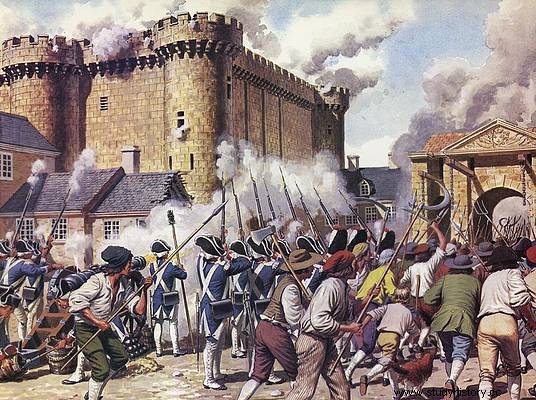
The attack on the Bastille prison on 14 July 1789 is considered to be the start of the French Revolution. By October of that year, the number of French revolutionaries had increased to thousands. On October 6, a mob of Parisian women marched to protest the price of bread in Versailles. They were joined along the way by a sympathetic crowd, including armed men, who ballooned the number to around ten thousand. The mob stormed the palace and eventually captured the king and queen. Marie Antoinette and Louis XVI were forced to march back to Paris, in a procession led by the heads of their dead bodyguards impaled on spikes.
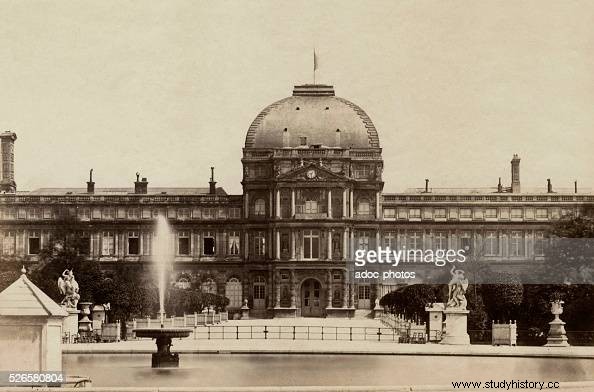
Planning an escape
Marie Antoinette and her wife, Count Axel Von Fersen, began to make a plan to escape the prison the royal estate was now in. In June 1791, the royal family tried to flee Paris and set course for the Austrian border. There were rumors that the queen's brother, now the Holy Roman Emperor, was waiting there with troops. They planned to overthrow the new revolutionary government and restore power to the monarchy and King Louis XVI. However, Marie Antoinette and the rest of her fleeing party never got that far. They were quickly captured and returned to Paris. This incident proved to many that the Queen was not just an outsider, she was a traitor.
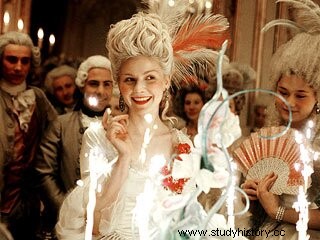
The uprising continues
When they were recaptured, Louis XVI agreed to approve a new constitution in exchange for retaining his symbolic power and throne. However, many revolutionaries continued to claim that the monarchy itself was corrupt. The new revolutionary government decided to test the loyalty of the king and queen in 1792, and declared war on Austria. The French army at that time was a mess, and as a result the war did not go well. Most of the blame for this fell on the feet of Austrian-born Marie Antoinette. In August, another mob attacked the Tuileries Palace, dethroned the king and queen and locked the family in the prison tower. What followed were months of massacres, targeting thousands of royalist prisoners and friends of the monarchy.

Implementation
In December 1792, King Louis XVI was convicted of treason. The court quickly handed down a guilty verdict and he was executed with guillotine in January 1793. The campaign against Marie Antoinette continued to grow, even after her husband's death. In July 1793, her son confessed to false allegations that she had sexually abused him in a revolutionary court under duress. She lost care of her children and was charged with another conviction along with high treason. In October 1793, Marie Antoinette stood trial. She was quickly convicted of high treason and sentenced to death with guillotine. She was 37 years old.
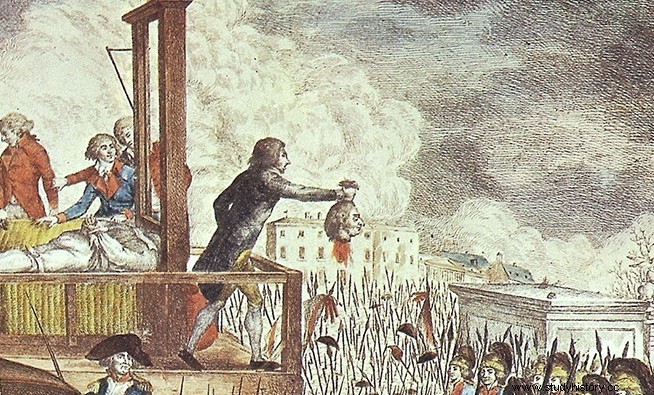
the conclusion
Marie Antoinette is still one of the most iconic figures in French history. Both loved and hated, she was a woman of great strength, courage and determination. Attracted by the finer things in life, she loved everything in abundance, which eventually ended in her destruction. As an Austrian princess at birth, she may not have been able to fully understand the reality of the terrible situation in France that led to the revolution. Her life is one that continues to attract fascination, and as the last royal queen of France, she has left a convincing legacy.
